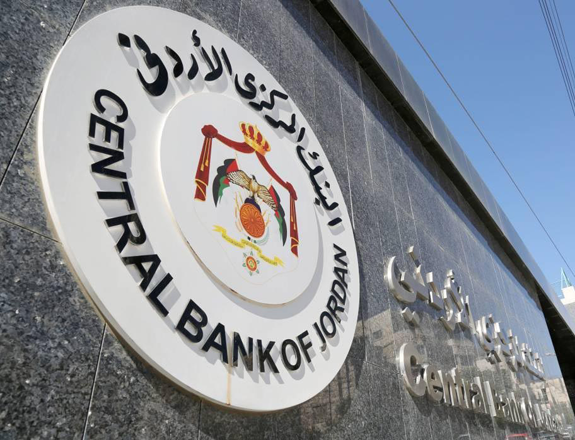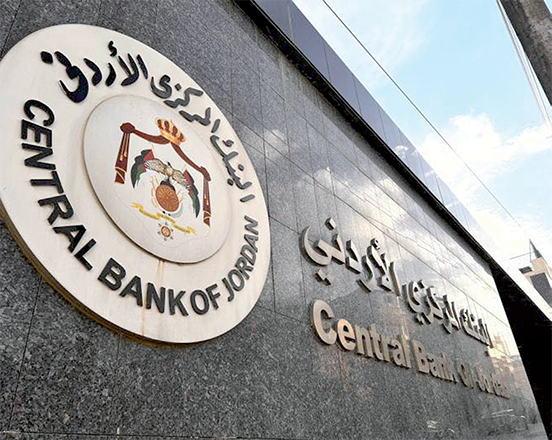You are here
CBJ lowers interest rates on monetary policy instruments by 50 basis points
By JT - Sep 20,2024 - Last updated at Sep 20,2024

The Central Bank of Jordan on Thursday decides to lower interest rates on all monetary policy instruments by 50 basis points, effective Sunday, 22 September 2024 (JT file)
AMMAN — The Central Bank of Jordan (CBJ) on Thursday decided to lower interest rates on all monetary policy instruments by 50 basis points, effective Sunday, 22 September 2024.
The move marks the end of the monetary tightening phase, which began in March 2022, to maintain the stability of the Jordanian dinar and curb inflationary pressures in the wake of the global recovery.
According to the CBJ's Open Market Operations Committee, the decision to cut interest rates comes as the bank's monetary policy objectives have been successfully achieved.
Key indicators, such as the strength of the Jordanian dinar, have been bolstered by a significant increase in foreign exchange reserves, which have risen from $18 billion in March 2022 to a historic high of $20bn by August 2024.
This level of reserves is sufficient to cover 8.7 months of Jordan's imports of goods and services.
Dollarisation declined from 19.4 per cent in March 2022 to 18.5per cent in July 2024, while inflation, which peaked at 5.4per cent in September 2022, has since fallen to 1.9per cent in August 2024.
Despite rising interest rates over the past two years, the interest rate margin of Jordanian banks — as measured by the spread between lending rates and time deposit rates — narrowed by 114 basis points to 2.24per cent in July 2024, the lowest margin in almost 30 years. This reflects improved operational efficiency in the banking sector.
The committee also highlighted several positive economic indicators, including a 6.8per cent year-on-year growth in bank deposits, which reached JD 45.7 billion at the end of July 2024. Banks’ credit facilities also increased by JD 1.2 billion, up 3.5per cent year-on-year to a total of JD 34.6 billion.
Jordan’s banking sector recorded a capital adequacy ratio of 17.6per cent, one of the highest in the region, and a liquidity ratio of 138.8per cent, well above the central bank’s regulatory requirement of 100per cent.
Non-performing loans (NPLs) stood at 5.6 per cent by mid 2024.
Workers’ remittances grew by 3.6per cent in the first seven months of 2024, reaching $2.05 billion. Tourism income reached $5 billion in the first eight months of 2024, showing a slight decline of 3.7per cent from last year, despite regional instability.
National exports grew by 5.4per cent in the first half of 2024, although a fall in global commodity prices resulted in a 1per cent drop in the total value of exports, to $6.3 billion.
Despite this, the trade deficit narrowed by 2.3per cent as the value of imports fell more than that of exports. Jordan’s economy grew by 2per cent in the first quarter of 2024, and the annual growth rate is expected to hover around 2.4per cent.
The central bank reiterated its commitment to monitor domestic and international economic and financial developments to implement measures that ensure monetary and financial stability in Jordan, while fostering an environment conducive to sustainable economic growth.
Related Articles
AMMAN — The Central Bank of Jordan (CBJ) announced on Saturday a 25-basis-point reduction in interest rates across all monetary policy instr
AMMAN — The Open Market Operations Committee of the Central Bank of Jordan (CBJ) on Thursday decided to maintain interest rates on monetary
AMMAN — The Open Market Operations Committee of the Central Bank of Jordan (CBJ) on Thursday decided to maintain interest rates on mon



















